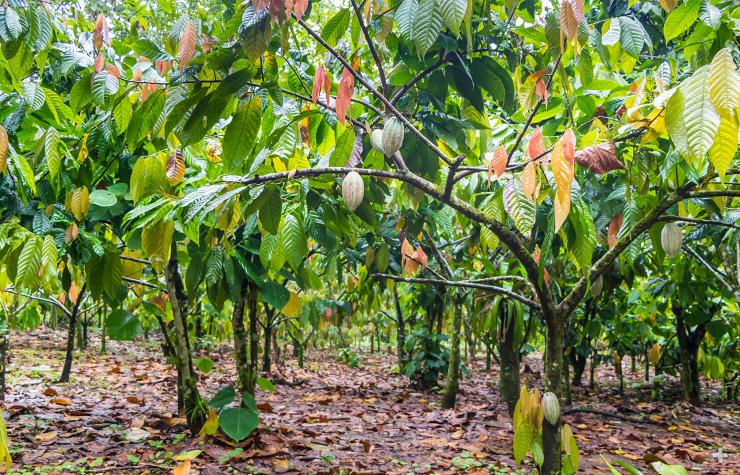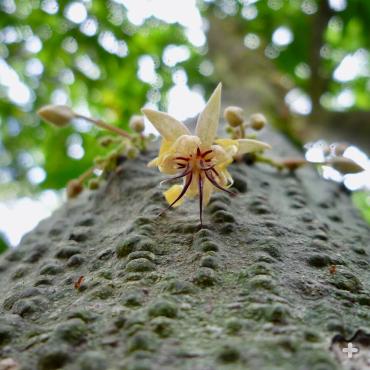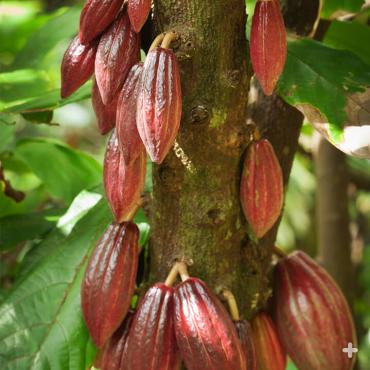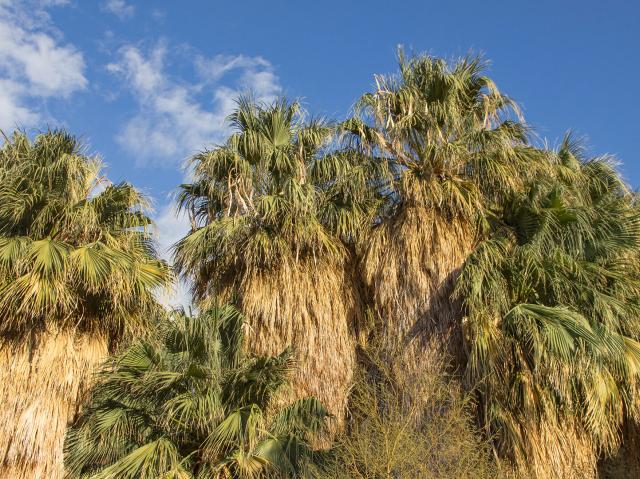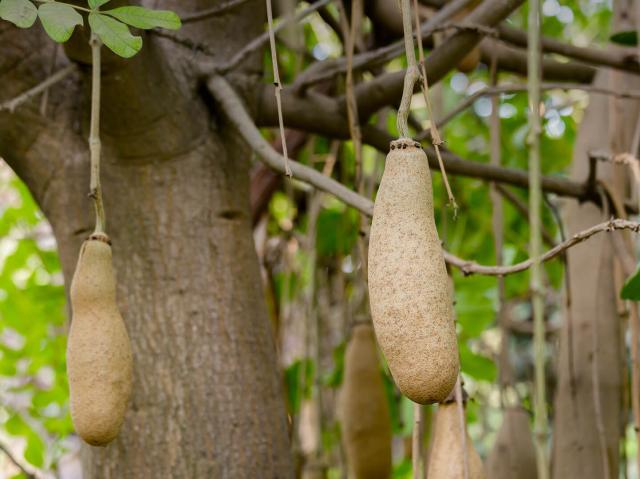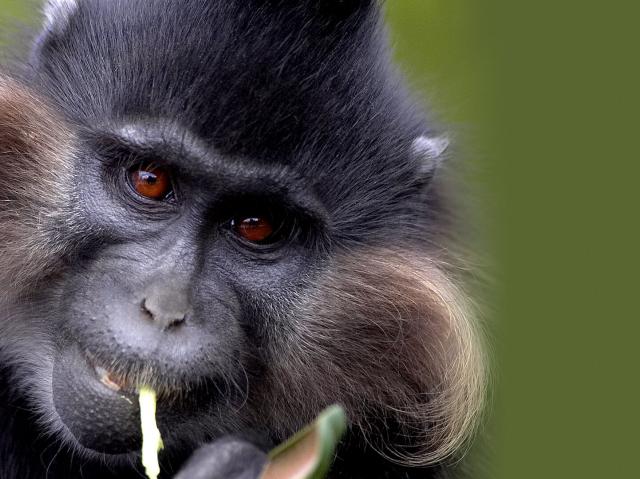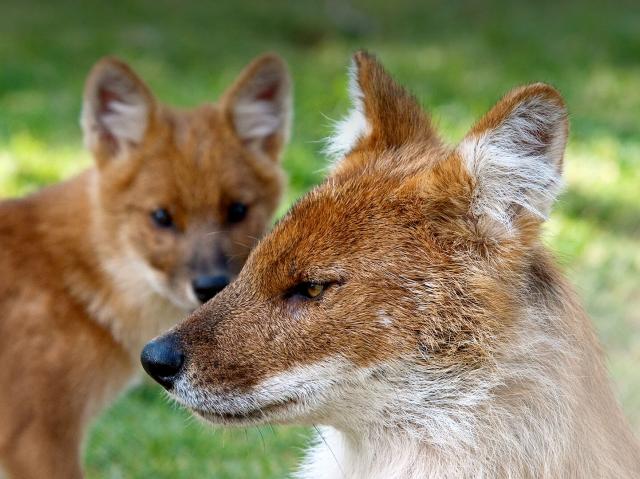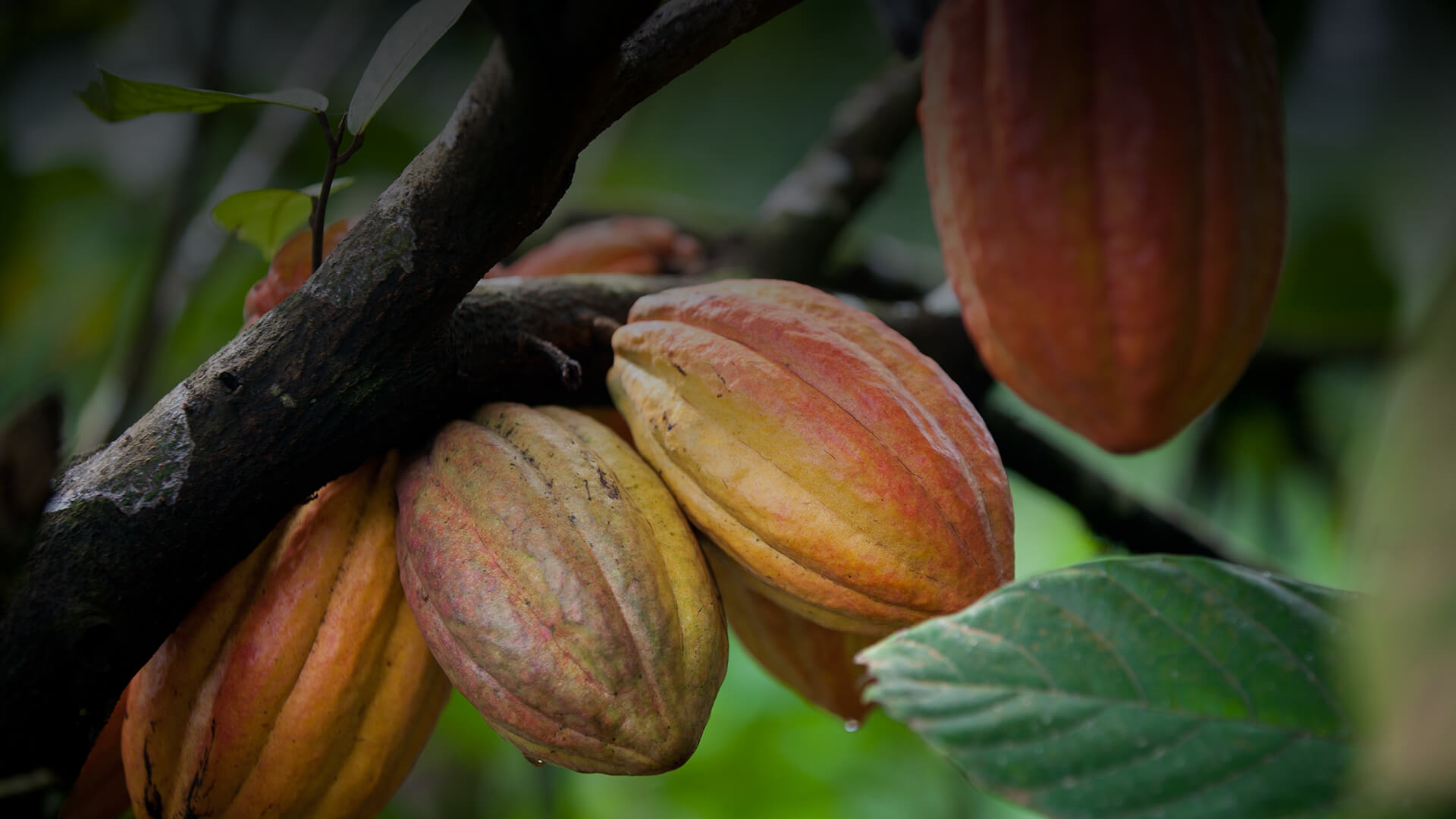
Cacao

- DIVISION: Magnoliophyta
- CLASS: Magnoliopsida
- ORDER: Malvales
- FAMILY: Malvaceae
- GENUS: Theobroma
- SPECIES: cacao

OVERVIEW
If you’re a chocolate lover, thank the cacao (pronounced kah-KOW) tree. Native to lush, tropical, rainforests of America, this tree is the source of the blissful flavor so many of us crave. The upper echelon of Mayan and Aztec culture enjoyed the flavor of cacao long before the invention of chocolate bars. They drank it as a frothy, warm—and bitter—beverage called xocolatl. A drink fit for royalty, priests, and decorated warriors, the sacred drink was served in golden cups. Explorer Christopher Columbus brought the first cacao “beans” (seeds) to Europe in the early 1500s, but it wasn’t until the 1600s that sugar was widely introduced—a match made in heaven! With its heady scent; lush, melting texture; and indescribable flavor, it’s no wonder people around the world embrace chocolate.
Requiring a strict diet of rain, shade, humidity, and nitrogen-rich soil, cacao trees grow in the warm, moist, shady forest understory—and only near the equator. Without seasonal temperature changes, the trees are in a continual state of reproduction, with flowers and fruits on the same tree. Monkeys, birds, fruit-eating bats, and rodents also have a taste for cacao. They gnaw open the pods to eat the sweet pulp. But the cacao seeds themselves are bitter, so wildlife spit them out. The seeds sprout and grow in the warm, rich soil, renewing the forest understory. A pod that somehow avoids predation eventually begins to rot, which stimulates the seeds to germinate and grow. The swelling pod ruptures and frees the already-sprouting seeds.
CHARACTERISTICS
Cacaos are evergreen trees that usually grow to about 13 to 26 feet (4 to 8 meters) tall, although they sometimes reach heights of 39 feet (12 meters). Large, glossy leaves are typically about the size of an adult’s outstretched hand, but they grow larger in areas of dark shade and smaller in sun-drenched areas. Adult leaves can move horizontally and vertically 90 degrees to catch sunlight and protect younger leaves from the elements.
Five-petaled, pink or white cacao flowers sprout directly from the trunk and branches. Midges (tiny flies) and possibly other small insects pollinate the flowers. When pollinated, the small flowers give way to massive, football-shaped fruits. The knobbly pods weigh 3 pounds (1.4 kilograms) or more and measure 8 to 14 inches (20 to 36 centimeters) long. Each pod contains 30 to 50 almond-size seeds surrounded by sweet, pale pulp.
CULTIVATION
While native to the Americas, cacao trees have been introduced as a crop plant into many tropical African and Asian countries, too. They grow in a belt that straddles the equator, from about 20 degrees north to 20 degrees south, mostly below 1,000 feet (305 meters) in elevation. They require about 4 inches (10 centimeters) of rain monthly, and fertile, well-drained, acidic soil. In 2008, world cocoa production was nearly 3.9 tons (3.5 metric tons). Africa produces 75 percent of the world’s cacao, and Ivory Coast is the top cacao-producing country.
USES
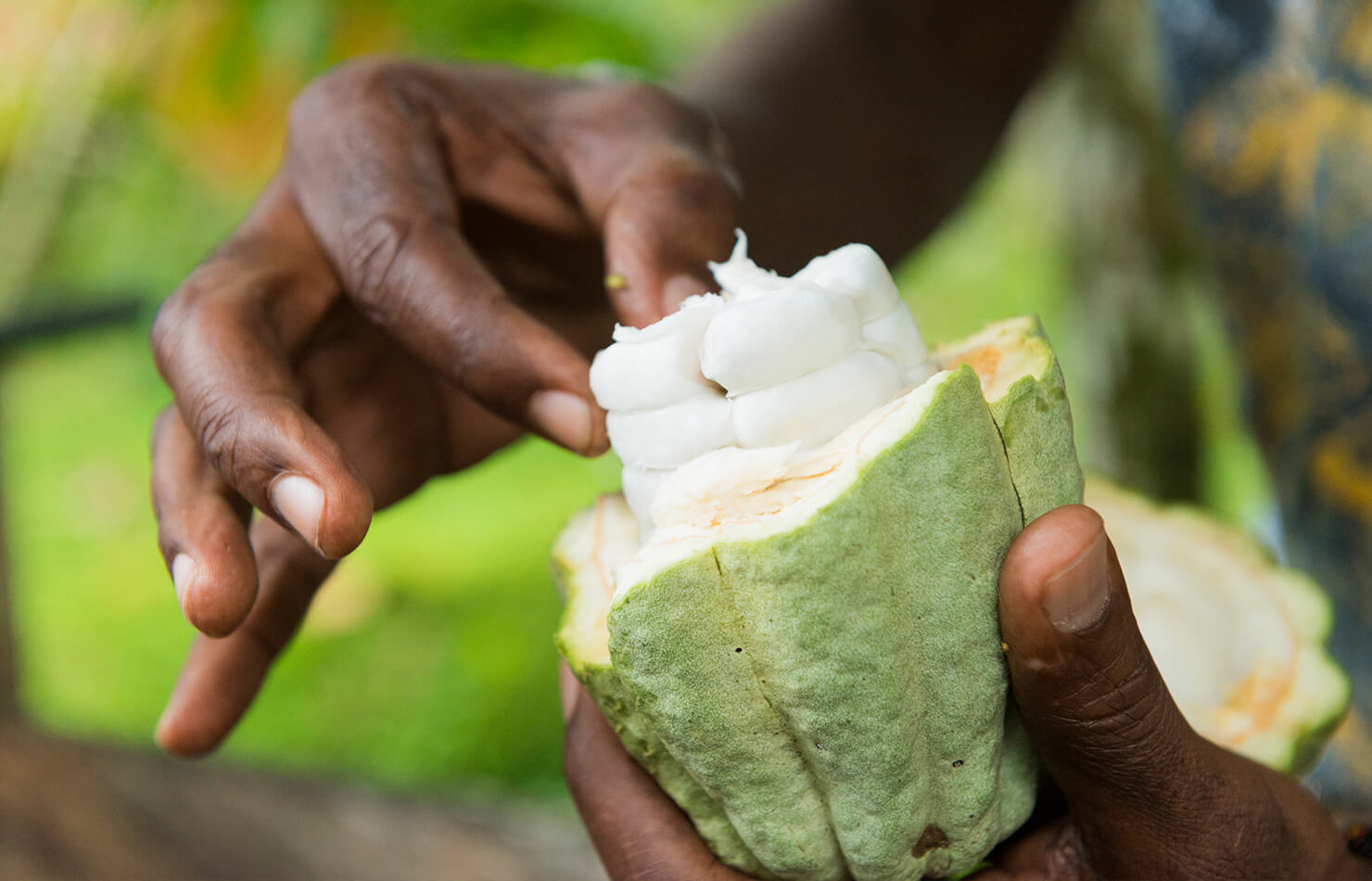
Farmers harvest ripe pods by hand, split them, and pile the pulpy cacao seeds in baskets or under banana leaves to dry and ferment. In about a week, the purplish seeds turn a rich, dark brown. Farmers wash the seeds and then dry them in the sun. Once dried, the precious cacao seeds are shipped to brokers, markets, and factories in burlap bags weighing up to 200 pounds each. They are destined to be roasted, and ground into cocoa powder.

It takes several hundred processed cacao beans to make a pound (about 450 grams) of chocolate. Chocolate comes in three main varieties: dark, milk, and white. The proportion of cacao solids contributes to its coloration. Cacao beans yield cocoa powder, chocolate liquor, and cocoa butter. White chocolate contains cocoa butter, but no chocolate liquor, leaving it pale and smooth. Dark chocolate, also called “black chocolate,” comes in different ranges of flavor, based on the percentage of cocoa. This dark delicacy gained in popularity when scientific reports stated an array of health benefits from eating it, like lowered blood pressure and improved cardiovascular performance, cognitive function, and (obviously!) mood. Milk chocolate—the most popular kind—is enriched with condensed milk. The most recent innovation in chocolate is "ruby chocolate," a naturally rosy-hued variety with a flavor that's just a tad tart.
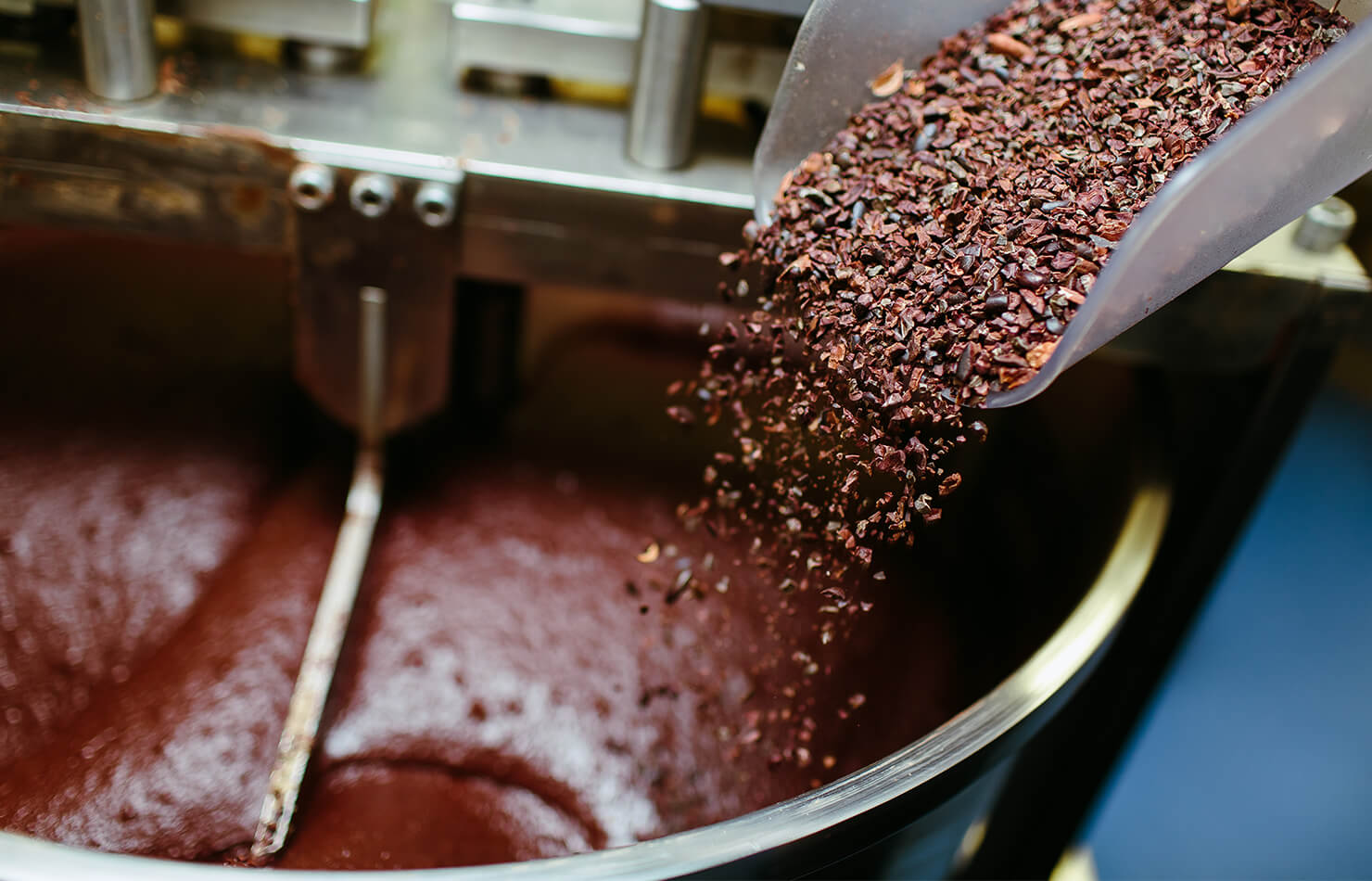
IN ITS PRIME
A young cacao tree grows rapidly, but it won’t begin to produce beans until it’s about five years old. A cacao tree can live up to 100 years, but most trees only provide marketable cacao beans for about 25 years.
RIPE FRUIT
A young cacao pod is green in color, and can turn yellow, red or purple when ripe. It takes four to five months to grow and several more weeks to ripen.
FROM BEAN TO BLISS
Europeans consume the most chocolate, with the average Swiss citizen enjoying 22 pounds per year, followed by Austrians who consume just over 20 pounds each year. People in the US put away about 11 pounds per year per person, according to the International Cocoa Organization.
SO SOFT
Cocoa butter is also used as a skin moisturizer.
PRECIOUS
Cacao beans have long been valuable items to trade around the globe. Long ago, they were used as currency in Central America.


